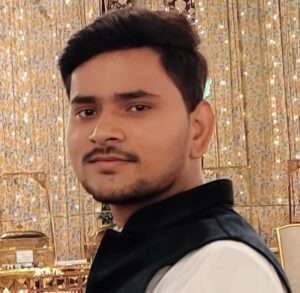1. Prime Minister of India
1.1. Appointment
1.2. Prime Minister of India – Details
1.3. Power And Functions Of The Prime Minister
1.4. Constitutional Provisions at Glance
1.5. Comparison Between Indian and British Prime Minister
1.6. Conclusion
2. Powers and Functions of Prime Minister
2.1. In Relation to the Council of Ministers
2.2. In Relation to the President
2.3. In Relation to the Parliament
2.4. Other Powers and Functions
2.5. Limitations To The Power Of Prime Minister
2.6. Misuse Of Power By Prime Minister
2.7. Conclusion

When I began my college journey, I often felt lost. Notes were scattered, the internet was overflowing with content, yet nothing truly matched the needs of university exams. I remember the frustration of not knowing what to study, or even where to begin.
That struggle inspired me to create Examopedia—because students deserve clarity, structure, and reliable notes tailored to their exams.
Our vision is simple: to make learning accessible, reliable, and stress-free, so no student has to face the same confusion I once did. Here, we turn complex theories into easy, exam-ready notes, examples, scholars, and flashcards—all in one place.
Built by students, for students, Examopedia grows with your feedback. Because this isn’t just a platform—it’s a promise that you’ll never feel alone in your exam journey.
— Founder, Examopedia
Always Yours ♥!
Harshit Sharma

Give Your Feedback!!
Topic – Prime Minister of India (Notes)
Subject – Political Science
(Constitution of India)
Table of Contents
Prime Minister of India
Prime Minister is referred to as the de facto executive as he is the real executive authority. Article 75 says that the Prime Minister shall be appointed by the president. The Prime Minister can be a representative of either House of the Parliament.According to the conventions of the parliamentary form of government, the President must designate the leader of the majority party in the Lok Sabha as Prime Minister. The Council of Ministers, headed by the Prime Minister, is collectively responsible to the Lok Sabha.
Prime Minister of India
- The prime minister is both the head of government and the real executive of the Indian system.
- Article 74 states that “There shall be a Council of Ministers with the Prime Minister at the head to aid and advise the President.”
- Article 75 mentions three things:
- The President appoints the PM and other ministers are appointed by the President on the advice of the PM
- Ministers hold their office during the pleasure of the President;
- The Council of Ministers is collectively responsible to the Lok Sabha.
- Article 78 states that the Prime Minister communicates all decisions made by the council of members to the President.
- The President can also refer issues for the consideration of the council of members.
Appointment
- Indirect election: The Prime Minister is appointed by the President.
- The President must designate the leader of the majority party in the Lok Sabha as Prime Minister in line with the norms of the parliamentary form of government.
- However, if no party has a clear majority in the Lok Sabha, the President may use his own discretion in selecting and appointing the Prime Minister.
- In such a case, the President normally selects the Prime Minister as the leader of the largest party or coalition in the Lok Sabha and instructs him to seek a vote of confidence in the House within a month.
- The President used this discretion for the first time in 1979, when Neelam Sanjiva Reddy (then President) named Charan Singh (the coalition leader) as Prime Minister following the fall of the Janata Party administration led by Morarji Desai.
- There is one further case in which the president may have to use his discretion in selecting and appointing the Prime Minister.
- However, if the governing party elects a new leader after the death of an existing Prime Minister, the President has no choice but to appoint him as Prime Minister.(Appointed Rajiv Gandhi as PM after the death of Indira Gandhi, by then President Zail Singh).
- According to the Constitution, the Prime Minister may serve in either of the two Houses of Parliament.
- Three Prime Ministers, for example, were Rajya Sabha members: Indira Gandhi (1966), Deve Gowda (1996), and Manmohan Singh (2004).
Constitution of India Membership Required
You must be a Constitution of India member to access this content.
